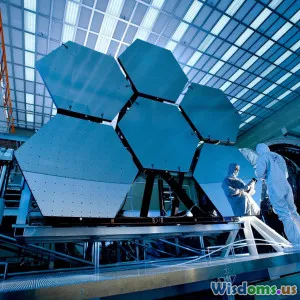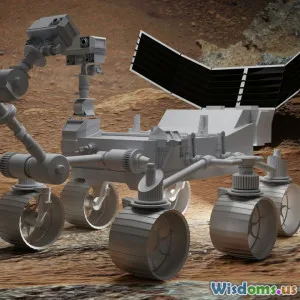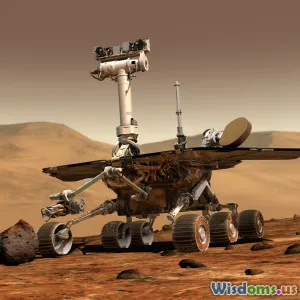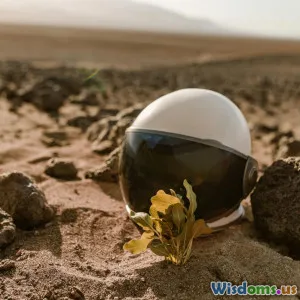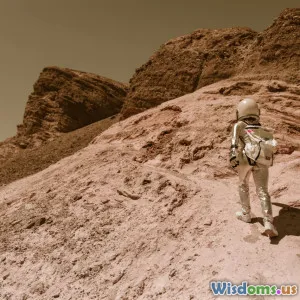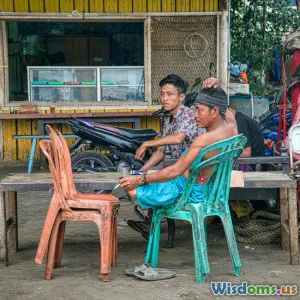
The Surprising Truth About Space Colonies and Daily Life
8 min read Discover unexpected realities of daily life in space colonies beyond science fiction. (0 Reviews)
The Surprising Truth About Space Colonies and Daily Life
Space colonies have long captured our imagination, fueled by countless science fiction novels, movies, and TV shows depicting futuristic societies thriving beyond Earth. But as humanity inches closer to making off-world settlements a reality, the truth about life in space colonies is more nuanced, fascinating, and complex than fiction suggests.
In this article, we'll uncover what daily life in a space colony might actually be like — beyond the sci-fi glamor — exploring key aspects such as habitat design, technology, psychological challenges, and sustainability. These insights provide not just a glimpse of an extraordinary future but also deepen our understanding of humanity’s resilience and adaptability.
1. Beyond Zero-Gravity: Creating Livable Habitats
A foundational truth about space colonies is that environments must be meticulously engineered to support human life. Free-floating cities like those imagined in science fiction remain conceptually fascinating, but the practical realities revolve around creating controlled habitats with gravity, air, water, and shelter — all tightly regulated.
Simulated Gravity and Habitat Design
Most proposed space colonies will use centrifugal force to simulate gravity, mitigating the harmful physiological effects of prolonged weightlessness, such as bone density loss and muscle atrophy. For instance, NASA and private space agencies consider rotating space stations or torus-shaped habitats where the centrifugal effect mimics Earth's gravity, allowing inhabitants to maintain normal bodily functions.
Firmly enclosed in these habitats, residents will live in modules featuring airlocks, recycling water through advanced purification systems, and growing food in carefully optimized hydroponic gardens. Experiments aboard the International Space Station (ISS) already showcase hydroponic vegetables that could form a crucial part of space diet.
Radiation Protection: A Real Danger
Unlike Earth, space is a harsh environment filled with cosmic radiation. Space colonies will rely on innovations such as buried habitats, water shielding, or electromagnetic fields to protect inhabitants. For example, the European Space Agency is researching electromagnetic shields mimicking Earth’s magnetic field to safeguard humans.
2. Daily Life: Routines, Work, and Recreation
The cliché of astronauts constantly performing scientific experiments only partially reflects life in space colonies. Human needs and social structures mean that day-to-day experiences will blend work, maintenance, social interaction, and leisure.
Work and Roles
Colonists may have diverse jobs — from maintaining life support systems and growing crops to conducting scientific research and manufacturing materials using in-situ resources like moon or asteroid materials. Automation and robotics will handle repetitive or hazardous tasks, augmenting human labor.
The presence of 3D printing technology enables on-demand production of tools, spare parts, and even clothing, which reduces dependence on Earth resupply missions. NASA’s experiments with 3D-printed rocket parts demonstrate this growing capability.
Psychological Well-being and Social Life
Long-term isolation and confinement can profoundly affect mental health. Recent studies in analog environments like NASA’s HI-SEAS habitat in Hawaii have revealed common challenges such as loneliness, sleep disturbances, and conflict management among crew members.
To counter these effects, space colonies will incorporate carefully designed communal areas, virtual reality for immersive relaxation, and routine communications with Earth. Cultural activities, celebrations, and the formation of new traditions will support community cohesion — vital elements of human flourishing.
Recreational activities may include exercise programs, including specially designed zero-gravity sports, and artistic endeavors that foster creativity and bonding.
3. Sustainability: The Challenge and Opportunity
Space colonies must be sustainable because resupply missions will be costly and delayed. This introduces intriguing challenges and innovations in recycling, agriculture, and energy.
Closed-Loop Life Support Systems
Scientists are developing closed ecological systems that recycle air, water, and waste with minimal loss. The "Bioregenerative Life Support Systems" combine plants, microorganisms, and bioreactors to replicate Earth’s biosphere functions.
One notable initiative is the MELiSSA project by the European Space Agency — a complex artificial ecosystem that converts waste into oxygen, water, and food. Success here is fundamental for long-lasting space settlements.
Food Production and Nutrition
Growing food in space isn't just about survival — it’s essential for psychological well-being and health. Fresh vegetables and diverse diets will combat nutrient deficiencies and provide variety to sustain morale.
Vertical farming and genetically optimized crops for space conditions will enhance yields. Experiments on growing potatoes and wheat on the ISS already show promise for space agriculture.
Energy Generation
Reliable energy sources are crucial. Solar energy, abundant in space, is the leading candidate, with solar panels on the habitat periphery harvesting vast amounts of energy without atmospheric interference. Future colonies may also harness nuclear fusion or asteroid mining for fuel.
4. Ethics and Social Implications
With the technological and physiological challenges addressed, many nuanced social and ethical questions arise concerning governance, equity, identity, and culture.
How will autonomy coexist with Earth-based organizations overseeing colonies? What laws will regulate resources, privacy, or conflicts?
Moreover, space colonies may become melting pots of cultures and beings, potentially including genetically enhanced humans or AI — raising questions about personhood and rights.
The famed astronaut Chris Hadfield once said, "Space exploration will be humanity’s next big adventure, but it must be grounded in respect for human diversity and sustainable values."
Conclusion: A Future Straddling the Fantastic and the Feasible
Space colonies are no longer merely the realm of imaginative fiction but an impending chapter in human history wrought with promise and complexity. Daily life away from Earth will demand a blend of cutting-edge technology, psychological resilience, and ethical foresight.
As we advance, the apparent "surprising truth" is that living off-world might not look like Hollywood’s blockbuster scenes but rather a gritty, demanding, yet deeply human tale of adaptation, community, and hope.
Understanding this prepares us not only for future frontiers but enriches our appreciation of Earth's fragile biosphere — inspiring us to cherish and protect our home while reaching for the stars.
References and Further Reading
- NASA Human Research Program: https://humanresearchroadmap.nasa.gov/
- European Space Agency's MELiSSA Project: https://www.esa.int/Enabling_Support/Space_Engineering_Technology/MELiSSA
- HI-SEAS Mars Analog Habitat: https://www.hi-seas.org
- Chris Hadfield quote source: Hadfield, C. (2013). An Astronaut’s Guide to Life on Earth.
Rate the Post
User Reviews
Popular Posts










